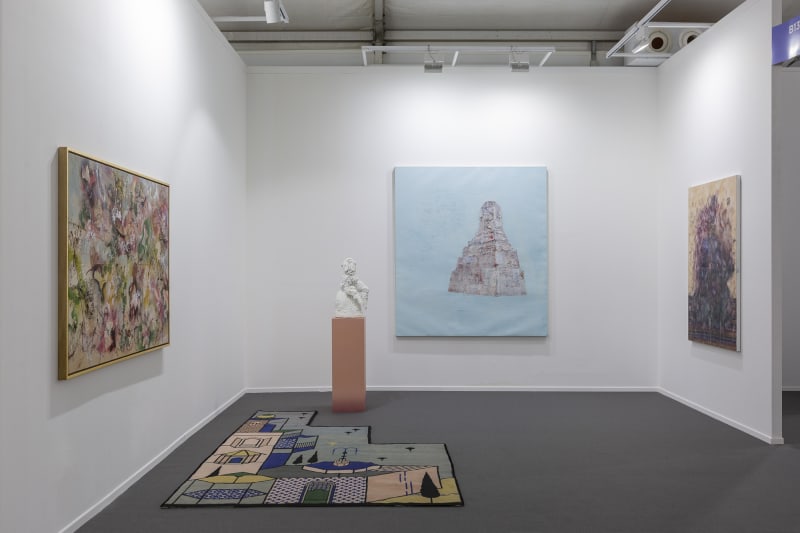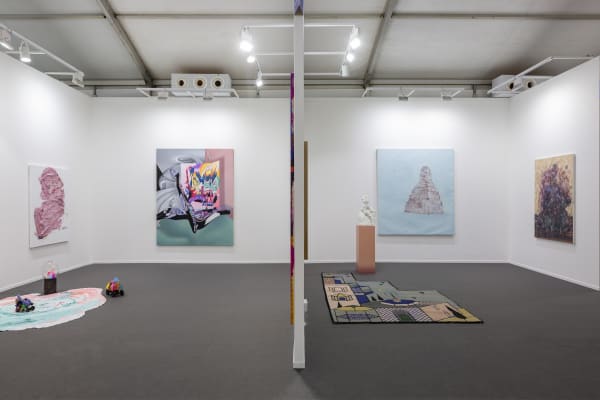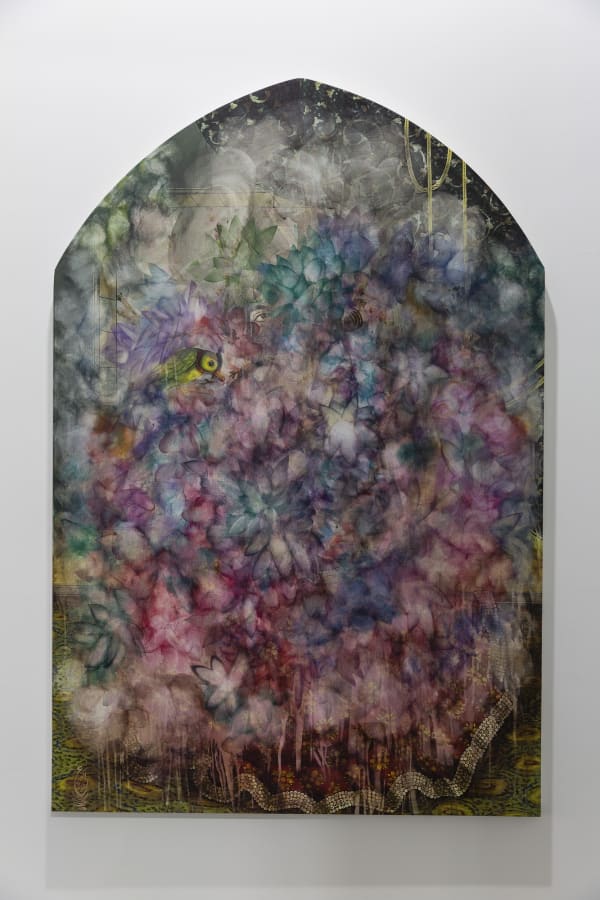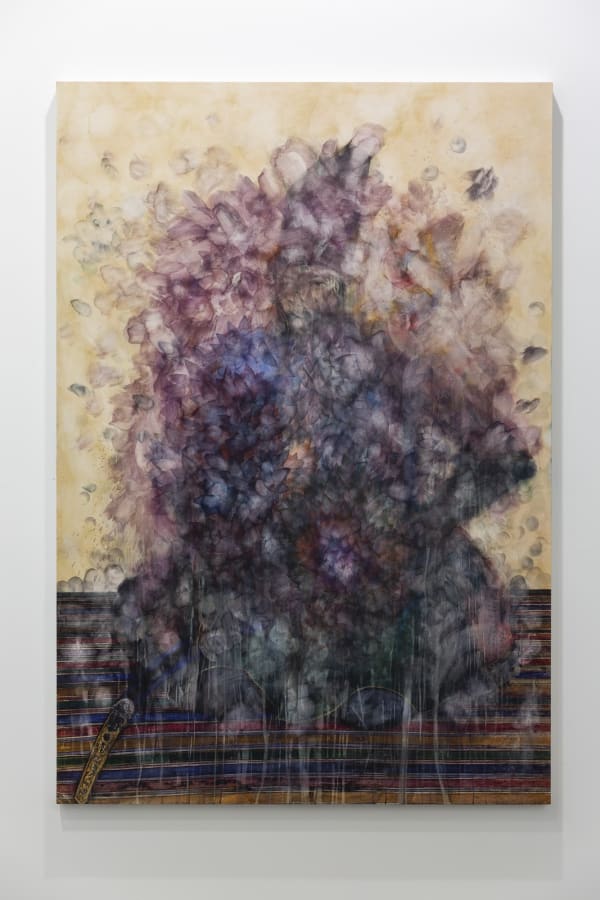+2: Art Dubai 2021
+2 is pleased to announce its debut participation at Art Dubai 2021 with a selection of works by Fereydoun Ave, Andisheh Avini, Reza Derakhshani, Bita Fayyazi and Studio Shizaru.
-
 Installation View of Dastan's Booth at Art Dubai 2021.
Installation View of Dastan's Booth at Art Dubai 2021. -
 Installation View of Dastan's Booth at Art Dubai 2021.
Installation View of Dastan's Booth at Art Dubai 2021. -
 Installation View of Dastan's Booth at Art Dubai 2021.
Installation View of Dastan's Booth at Art Dubai 2021. -
 Installation View of Dastan's Booth at Art Dubai 2021.
Installation View of Dastan's Booth at Art Dubai 2021. -
 Installation View of Dastan's Booth at Art Dubai 2021.
Installation View of Dastan's Booth at Art Dubai 2021. -
 Installation View of Dastan's Booth at Art Dubai 2021.
Installation View of Dastan's Booth at Art Dubai 2021.
-

Art Dubai: the first real-life fair since the start of the pandemic announces formats of the future
Judith Benhamou Reports April 4, 2021Judith Benhamou-Huet Reports has recently published an article on this years Art Dubai, reviewing some of the exhibitor's booths and interviewing with some of the...Read more -
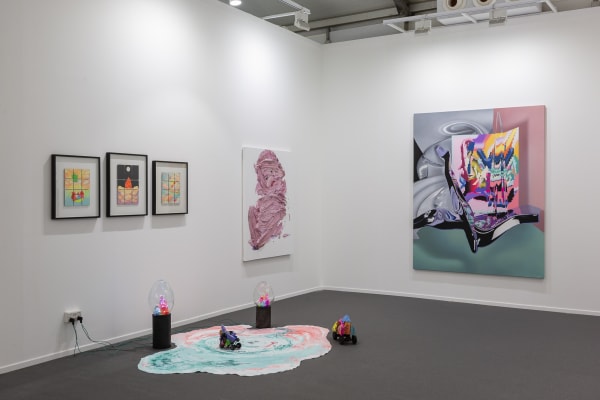
Art Dubai 2021: These are some of the most eye-catching works at this year's fair
The National March 31, 2021The Arts & Culture section of UAE's The National has recently published an article on 'some of the most eye-catching works' at this year's Art...Read more -

Is Art Dubai the Future of Art Fairs?
Hypebeast March 29, 2021Hypebeast has recently published an article on this year's Art Dubai Art Fair. Click here to read it in full.Read more
+2
Art Dubai 2021, Booth B13
Fereydoun Ave, Andisheh Avini, Reza Derakhshani, Bita Fayyazi and Studio Shizaru
+2 is pleased to announce its participation at Art Dubai 2021 with a presentation of works by Fereydoun Ave, Andisheh Avini, Reza Derakhshani, Bita Fayyazi and Studio Shizaru.
Fereydoun Ave (b. 1945, Tehran, Iran) is one of the most influential individuals in Iranian contemporary art and his prolific efforts have taken diverse aspects. He received his BA in Applied Arts for Theatre from Arizona State University, studied film at New York University, and studied at the University of Seven Seas (aka Semester at Sea). During his career, which spans over five decades, he has successfully taken many different roles including artist, designer, art director, collector, curator, gallerist and art patron. His artworks have been featured in many solo exhibitions along with hundreds of group shows in galleries and museums all around the world. As well as being purchased by many notable private collectors, Ave’s work has been acquired by prestigious art institutions including The British Museum in London, The Metropolitan Museum of Art in New York, Los Angles County Museum of Art (LACMA), Centre Georges Pompidou in Paris, Cy Twombly Foundation and Tehran Museum of Contemporary Art (TMOCA).
Brooklyn-based artist Andisheh Avini’s (b. 1974) artistic practice includes painting, drawing, printmaking, and sculpture, often incorporating the traditional craft of marquetry. Avini explores the duality of his own identity by combining iconic Iranian images like Persian calligraphy, decorative motifs, and portraits with occidental concepts of minimalism and abstraction. Avini‘s approach speaks to a larger globalized society of nomads and dispersed individuals and reflects a contemporary multicultural experience to which many can relate.
Reza Derakshani (born 1952) is considered to be one of the most significant contemporary Iranian artists. He was born into a nomadic childhood, living atop a mountain in a tent in Sansgar, a small village in the North East of Iran. He received his B.A. in Visual Art from the University of Tehran in 1976, and continued his study of Visual Arts at the Pasadena School of Art, USA in 1978. Derakhshani's works have been featured in numerous public art collections such as the Metropolitan Museum of Art (New York), The British Museum (London), The Museum of Contemporary Art and the Pasargad Museum (both in Tehran), the Kunstsammlungen Chemnitz (Chemnitz), The Russian Museum (St Petersburg). He has been the subject of numerous solo and group exhibitions, in both galleries and museums, all over the world. The multi- talented child prodigy is also a musician, poet and performance artist. This is also reflected in his canvases, which display both rhythmic harmonies and cultural memory - characteristics that have often led to comparisons with the works of Wassily Kandinsky, and Paul Klee. Stretching his success way beyond the realm of visual art, Derakhshani has graced the stages of numerous museums and festivals as a musician, with performances at the Brooklyn Museum and the Montreux Jazz Festival, as well as album collaborations with legendary musicians such as John Densmore, the drummer of the Doors, Madonna, and Branford Marsalis.
Derakshani’s artistic and geographic migration took him to New York City, where he made a home and worked for sixteen years. He later moved to Italy, eventually returning to Tehran for seven years before leaving his homeland once again in 2010 and settling in Dubai. He moved back to the United States a few years later. Derakshani currently lives and works between Austin, USA and St Petersburg, Russia.
Bita Fayyazi (b. 1962, Tehran) currently lives and works in Tehran. Her multifarious practice incorporates a wide range of media from sculpture to drawing, installation and performance. Ever since she began her artistic practice in mid-1990s, she has been known for her process- oriented collaborations and public art installations that transcend using a single medium and move towards multidimensional works. In addition to running independent public art and collaborative projects, Bita Fayyazi has also participated in many renowned international artistic events. Her works have been featured in the Iranian Pavilion at the 51st Venice Biennale in 2005 and have been exhibited at Espace Louis Vuitton (Paris, 2008 and 2010), The Museum of Modern Art, (Freiburg, 2007) and the Pergamon Museum (Berlin, 2008), among others.
Studio Shizaru was founded in Tehran in 2009 by co- founders Paulette Ghahremanian and Mehrdad Mohammad Zadeh. Mehrdad’s educational background in object design was combined with that of Paulette in graphic design to form the design studio which initially focused on graphic design as well as branding and identity. The duo soon expanded the studio’s portfolio into furniture, product, object, environmental and interior design. Shizaru currently operates from offices in Tehran and Los Angeles. The studio has been the subject of attention by a diverse set of commentators in arts and design, winning much critical acclaim from relevant publications, namely Wallpaper magazine. Shizaru’s work was most recently exhibited at Maison&Objet Paris. Taking inspiration and influence from Iranian painting, book design, traditional architecture and historical furniture design, Shizaru’s work can best be contextualized under post- pop art and design. Moreover, a unique aspect of their work is blurring the line between two- dimensional graphic design and three- dimensional object design.
